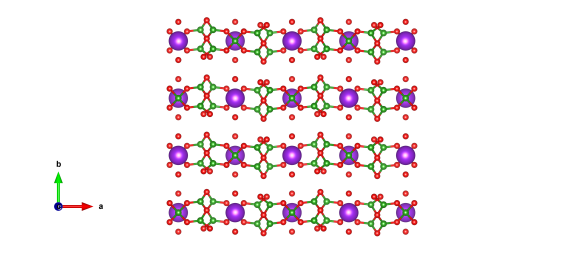It’s making a list – Santite
What does it look like?

Purple atoms (potassium) interwoven with borate (green boron and red oxygen) chains. Image generated by the VESTA (Visualisation for Electronic and STructural analysis) software http://jp-minerals.org/vesta/en/
*sings* 'and checking it twice, gonna find out who's naughty or nice….'
SANTITE is on Crystallography 365!
What is it?
It’s a little bit of a stretch, we know (go on, you go and look for more Christmas-inspired minerals!) but here is Santite! This mineral was first identified from synthetic means, its crystal structure found in 1937. Then in 1970 a group of Italian scientists identified this material in the hills of Tuscany (hard field work, eh?). They named it after a former director of the Museum of Natural History of Italy, George Santi.
It's a very rare borate mineral, where the boron hooks up to oxygen and (rather pleasingly) forms paper chain like features running thought the structure – interwoven with potassium ions.
Where did the structure come from?
Santite, or its synthetic name potassium acid dihydronium pentaborate, is #9011411 in the Crystallography Open Database, and was found by Zachariasen in 1937.






